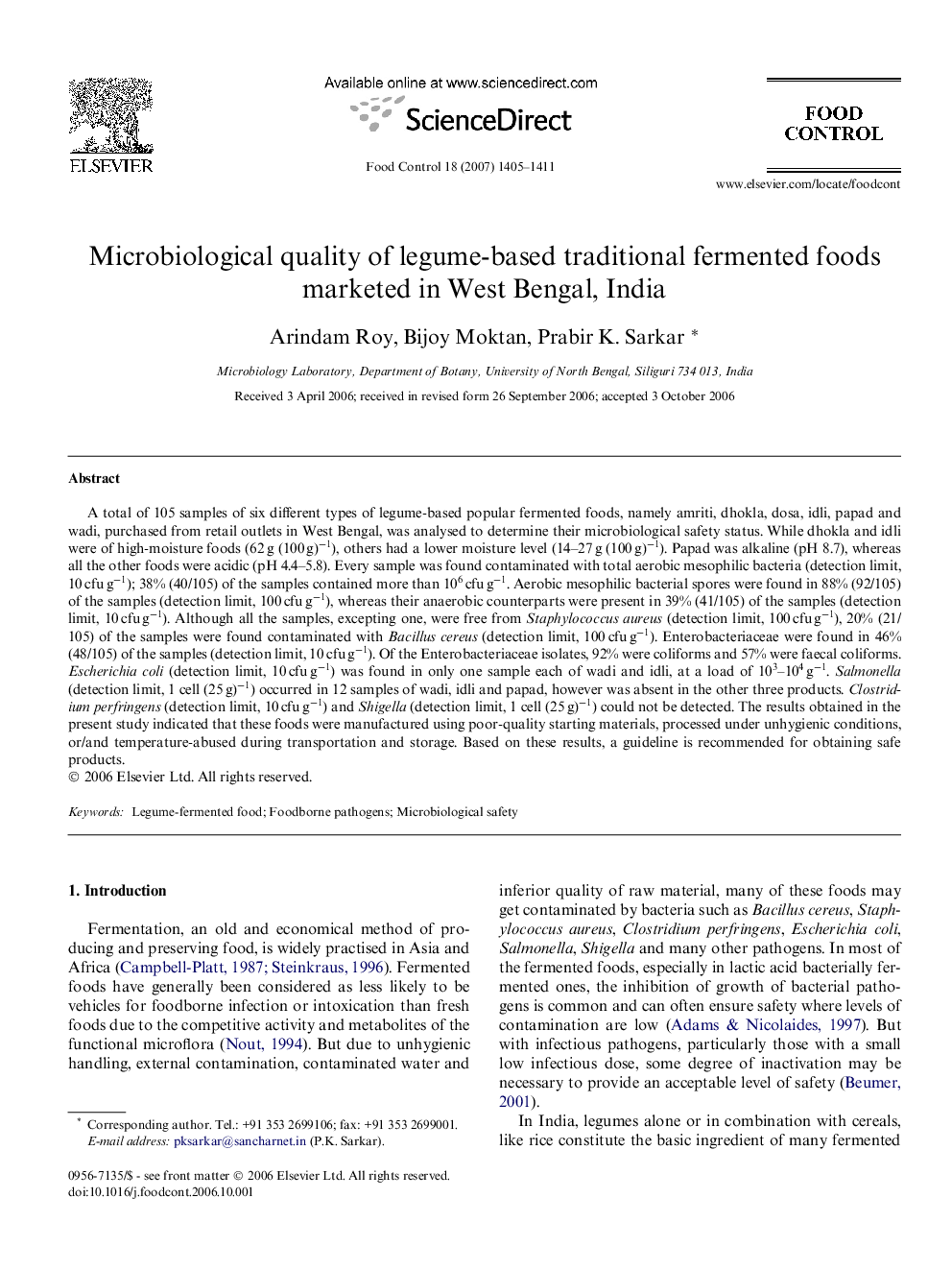| کد مقاله | کد نشریه | سال انتشار | مقاله انگلیسی | نسخه تمام متن |
|---|---|---|---|---|
| 4560393 | 1330503 | 2007 | 7 صفحه PDF | دانلود رایگان |

A total of 105 samples of six different types of legume-based popular fermented foods, namely amriti, dhokla, dosa, idli, papad and wadi, purchased from retail outlets in West Bengal, was analysed to determine their microbiological safety status. While dhokla and idli were of high-moisture foods (62 g (100 g)−1), others had a lower moisture level (14–27 g (100 g)−1). Papad was alkaline (pH 8.7), whereas all the other foods were acidic (pH 4.4–5.8). Every sample was found contaminated with total aerobic mesophilic bacteria (detection limit, 10 cfu g−1); 38% (40/105) of the samples contained more than 106 cfu g−1. Aerobic mesophilic bacterial spores were found in 88% (92/105) of the samples (detection limit, 100 cfu g−1), whereas their anaerobic counterparts were present in 39% (41/105) of the samples (detection limit, 10 cfu g−1). Although all the samples, excepting one, were free from Staphylococcus aureus (detection limit, 100 cfu g−1), 20% (21/105) of the samples were found contaminated with Bacillus cereus (detection limit, 100 cfu g−1). Enterobacteriaceae were found in 46% (48/105) of the samples (detection limit, 10 cfu g−1). Of the Enterobacteriaceae isolates, 92% were coliforms and 57% were faecal coliforms. Escherichia coli (detection limit, 10 cfu g−1) was found in only one sample each of wadi and idli, at a load of 103–104 g−1. Salmonella (detection limit, 1 cell (25 g)−1) occurred in 12 samples of wadi, idli and papad, however was absent in the other three products. Clostridium perfringens (detection limit, 10 cfu g−1) and Shigella (detection limit, 1 cell (25 g)−1) could not be detected. The results obtained in the present study indicated that these foods were manufactured using poor-quality starting materials, processed under unhygienic conditions, or/and temperature-abused during transportation and storage. Based on these results, a guideline is recommended for obtaining safe products.
Journal: Food Control - Volume 18, Issue 11, November 2007, Pages 1405–1411